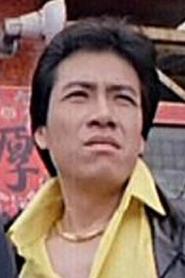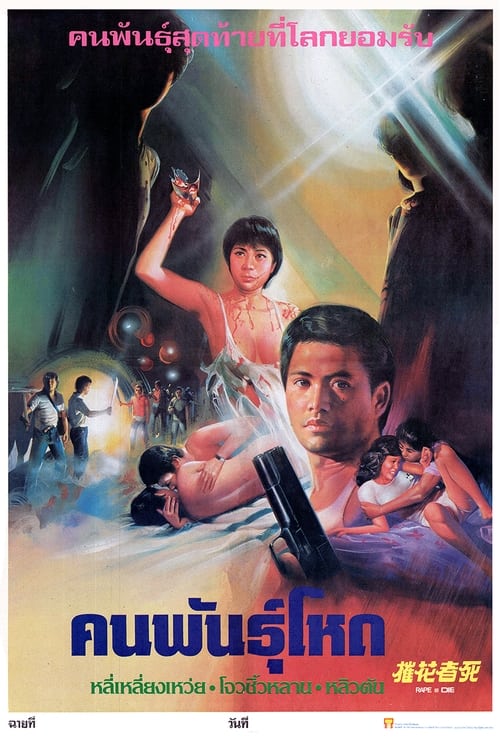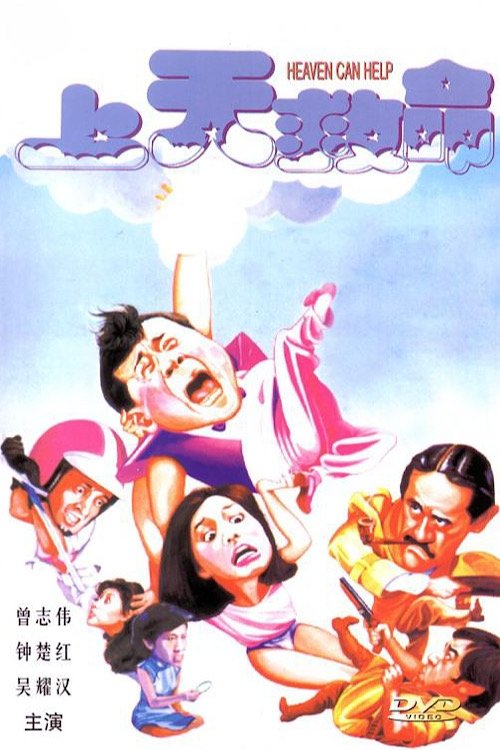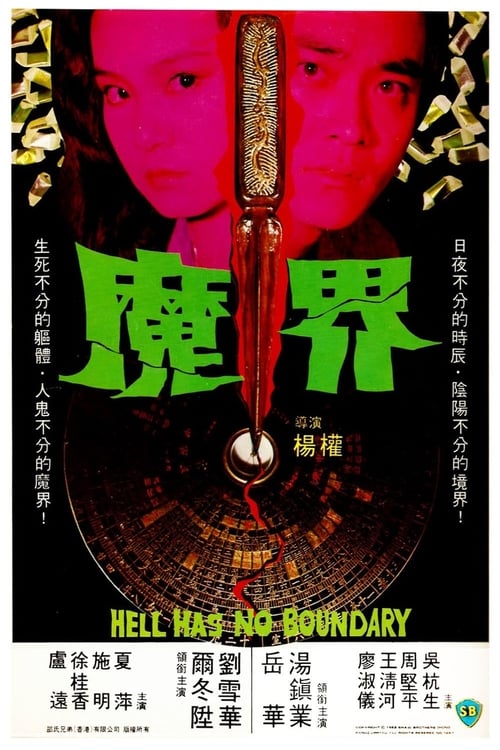
Ask Your Own Question
What is the plot?
The film Hired Guns (1981) opens in the gritty urban sprawl of early 1980s Hong Kong, immediately immersing the viewer in a tense atmosphere of crime and law enforcement. The camera sweeps through dimly lit streets, neon signs flickering over shadowy alleys where Triad gangs operate with impunity. Against this backdrop, Inspector Goony, played by Dai Sai Aan, commands attention as a determined and relentless police officer. He supervises an undercover squad tasked with dismantling the Triad's grip on prostitution and illegal gambling dens. Goony's demeanor is serious, his eyes sharp with resolve, underscoring his commitment to justice despite the personal toll it exacts.
Goony's sidekick, Nan Ah, is introduced alongside him during a police briefing at the headquarters, a cramped, utilitarian space where plans are drawn and intelligence shared. The two officers discuss the escalating violence linked to the Ho Brothers--Phillip Ko Fei and Tsai Hung--ruthless gang leaders who have imported hired guns from Europe, specifically the Netherlands, to enforce their criminal empire. These hired guns add a chilling layer of professionalism and brutality to the gang's operations.
Parallel to the police world, the film cuts to Goony's modest home, a stark contrast to the violent streets. Here, his pregnant wife is portrayed as simple-minded and nagging, often absorbed in Mahjong games with neighbors. Her nagging, though irritating, is rooted in concern for Goony's long hours and obsession with work. Their young son plays quietly nearby, oblivious to the storm gathering around his family. The domestic scenes are tinged with tension, foreshadowing the personal cost of Goony's crusade against the Triads.
The narrative quickly moves into action as Goony's undercover squad launches raids on Triad-controlled dens. These locations are seedy gambling halls and brothels, dimly lit and filled with smoke and whispered threats. The police's sudden incursions disrupt the gang's operations, leading to violent shootouts. Several unnamed gang members fall in these clashes, their deaths swift and brutal, underscoring the dangerous stakes involved.
Despite these successes, the Ho Brothers remain elusive. Their hideouts, fortified and guarded by their European hired guns, serve as ominous strongholds. The gang retaliates viciously, escalating the conflict. One particularly harrowing scene depicts a retaliatory attack on police officers, resulting in multiple deaths. The camera lingers on the aftermath: bloodied uniforms, shattered badges, and the grim faces of surviving officers. The Ho Brothers' message is clear--no one is safe.
The tension ratchets up sharply when the gang targets Goony's family in a calculated act of vengeance. One night, shadows creep around Goony's home. The camera captures the terrified faces of his wife and son as gang members break in. The violence is sudden and merciless. Though the film does not detail every injury, it is clear the family suffers greatly, with the pregnant wife's nagging now transformed into desperate pleas for safety. Goony arrives just in time to confront the attackers, his face a mask of fury and fear.
In a visceral, chaotic fight, Goony battles the gangsters in his own home. Gunfire echoes through the cramped apartment, shattered Mahjong tiles scattering across the floor--a haunting symbol of his fractured domestic life. Goony's police badge glints in the dim light, emblematic of his dual role as protector of both law and family. The scene is raw and emotional, with Goony's desperation palpable as he fights to save his son and wife.
The film's climax unfolds with Goony tracking the Ho Brothers and their hired guns to a final showdown. The location is a deserted warehouse on the outskirts of the city, shadows stretching long in the fading light of dusk. Here, Goony confronts Phillip Ko Fei and Tsai Hung, their faces cold and unrepentant. The European hired guns flank them, weapons ready. The dialogue crackles with menace:
Goony, gripping his pistol tightly, snarls, "This ends tonight. No more running, no more hiding."
Phillip Ko smirks, "You think you can stop us? You're just one man."
The ensuing battle is brutal and unrelenting. Gunfire rips through the air, bodies fall--both gangsters and hired guns alike. Goony's tactical skill and sheer determination turn the tide. One by one, the Ho Brothers and their mercenaries fall, their deaths marked by a mix of gunshots and hand-to-hand combat. The camera captures Goony's exhaustion and resolve, sweat and blood mingling on his face as he dispatches the last of his foes.
In the aftermath, Goony stands amidst the carnage, breathing heavily. The warehouse is silent except for the distant sirens signaling reinforcements. He calls out for his family, relieved to find them alive but forever changed by the ordeal. The film closes on a somber note, focusing on Goony's family as they cling to each other in the fragile peace restored. The nagging wife, now quiet, holds her son close, while Goony's gaze drifts toward the horizon, burdened by the sacrifices made.
Throughout the film, the personal cost of Goony's dedication is laid bare. His wife's simple-mindedness and nagging, once a source of domestic friction, become a poignant backdrop to his workaholic tendencies and the dangers he faces. The Ho Brothers' international criminal ties, especially their use of European hired guns, add complexity to the narrative, revealing a global dimension to Hong Kong's underworld.
Every confrontation, every death--from the unnamed gang members in the opening raids to the final kills of the Ho Brothers--builds toward this climax, weaving a story of relentless pursuit, brutal vengeance, and the fragile line between duty and family. The film's gritty cinematography and unpolished style enhance the raw emotion and tension, making Hired Guns a stark portrayal of crime, sacrifice, and survival in a city on edge.
What is the ending?
In the ending of "Hired Guns," the main characters confront their adversaries in a climactic showdown. The protagonist, along with his allies, faces off against the villains, leading to a series of intense confrontations. Ultimately, justice prevails, but not without significant sacrifice. The film concludes with a sense of resolution as the surviving characters reflect on their choices and the consequences of their actions.
Now, let's delve into the ending in a more detailed, chronological narrative.
As the final act unfolds, the tension escalates. The protagonist, a seasoned mercenary, gathers his remaining allies in a dimly lit warehouse, the air thick with anticipation and the weight of their past decisions. Each character is visibly affected by the looming confrontation; their faces are etched with determination, but also with the shadows of doubt and fear. They know that this battle could be their last.
The scene shifts to the villains, who are holed up in a fortified location, their demeanor cold and calculating. They are aware that the mercenaries are coming for them, and they prepare for the inevitable clash. The camera captures their ruthless confidence, highlighting their belief that they hold all the power.
As night falls, the mercenaries make their move. The atmosphere is charged with adrenaline as they stealthily approach the villains' hideout. The sound of footsteps echoes in the silence, and the tension is palpable. The protagonist leads the charge, his heart racing, driven by a mix of vengeance and a desire to protect his comrades.
The first confrontation erupts suddenly. Gunfire shatters the stillness, and chaos ensues. The mercenaries engage in a fierce battle, each character showcasing their unique skills and fighting styles. The protagonist fights valiantly, his movements a blend of precision and desperation. He is fueled by the memories of those he has lost and the stakes of the mission.
As the fight progresses, the characters face various challenges. One ally is gravely injured, and the protagonist feels a surge of panic and anger. He rushes to help, showcasing his loyalty and the deep bonds formed through their shared experiences. The emotional weight of the moment is heavy, as the protagonist grapples with the fear of losing another friend.
The climax reaches its peak when the protagonist confronts the main antagonist in a one-on-one showdown. The tension is thick as they exchange words, revealing their motivations and the personal stakes involved. The protagonist's resolve is tested, and the audience can feel the emotional turmoil as he fights not just for survival, but for redemption.
In a final, desperate struggle, the protagonist manages to overpower the antagonist. The moment is bittersweet; while he has achieved victory, it comes at a great cost. The camera lingers on the protagonist's face, capturing a mix of relief and sorrow as he realizes the toll of their violent choices.
As the dust settles, the surviving characters regroup. They are battered and bruised, but alive. The warehouse, once a battleground, now stands as a testament to their struggle. The protagonist looks around at his friends, their faces reflecting a mix of triumph and grief. They have won, but the victory feels hollow.
In the closing moments, the protagonist stands alone, contemplating the path that led them to this point. The weight of their actions hangs heavy in the air, and he understands that while they have defeated their enemies, the scars of their journey will remain. The film ends with a sense of unresolved tension, leaving the audience to ponder the true cost of their choices.
The fate of each main character is revealed in these final scenes. The protagonist emerges as a reluctant hero, forever changed by the experience. His allies, though battered, stand by his side, united in their shared trauma. However, the loss of their fallen comrade serves as a stark reminder of the fragility of life and the consequences of their violent lifestyle. The film closes on a somber note, emphasizing the emotional and moral complexities of their journey.
Is there a post-credit scene?
The movie "Hired Guns," produced in 1981, does not feature a post-credit scene. The film concludes without any additional scenes or content after the credits roll. The story wraps up with the resolution of the main plot, focusing on the characters' fates and the consequences of their actions throughout the film.
Who are the main characters in Hired Guns and what are their motivations?
The main characters in Hired Guns include a group of mercenaries led by the tough and resourceful character, Nick. Each member of the team has their own backstory and motivations, such as seeking redemption, financial gain, or a sense of adventure. Nick is driven by a desire to prove himself and protect his team, while other characters grapple with their pasts and the moral implications of their work.
What is the significance of the mission the mercenaries undertake?
The mission that the mercenaries undertake is significant as it tests their skills, loyalty, and moral boundaries. They are hired to rescue a kidnapped individual, which brings them into conflict with a powerful enemy. This mission serves as a catalyst for character development, revealing their strengths and weaknesses, and ultimately leading to moments of intense action and emotional conflict.
How does the relationship between Nick and his team evolve throughout the film?
Throughout Hired Guns, the relationship between Nick and his team evolves from one of mere professional obligation to a deeper bond forged through shared experiences and challenges. As they face life-threatening situations, they learn to trust and rely on each other, leading to moments of camaraderie and tension that highlight their individual personalities and struggles.
What challenges do the mercenaries face during their mission?
The mercenaries face numerous challenges during their mission, including ambushes from enemy forces, internal conflicts within the team, and the moral dilemmas of their actions. These challenges not only test their physical abilities but also force them to confront their own motivations and the consequences of their choices, leading to moments of doubt and reflection.
How does the film portray the theme of loyalty among the mercenaries?
Hired Guns portrays the theme of loyalty among the mercenaries as a central element of the story. As they navigate the dangers of their mission, the characters must decide where their loyalties lie--whether with each other, their employer, or their own personal codes of honor. This theme is explored through various interactions and conflicts, ultimately shaping the outcome of their mission and their relationships.
Is this family friendly?
"Hired Guns," produced in 1981, is not considered family-friendly due to its content. The film features several potentially objectionable elements that may be upsetting for children or sensitive viewers.
- Violence: The movie includes scenes of gunfights and physical confrontations, which may be intense and graphic.
- Mature Themes: The storyline revolves around crime and betrayal, exploring darker aspects of human nature that may not be suitable for younger audiences.
- Language: There are instances of strong language that could be inappropriate for children.
- Emotional Turmoil: Characters experience significant emotional distress, including betrayal and loss, which may be heavy for sensitive viewers.
These elements contribute to a tone that is more suited for adult audiences.

























